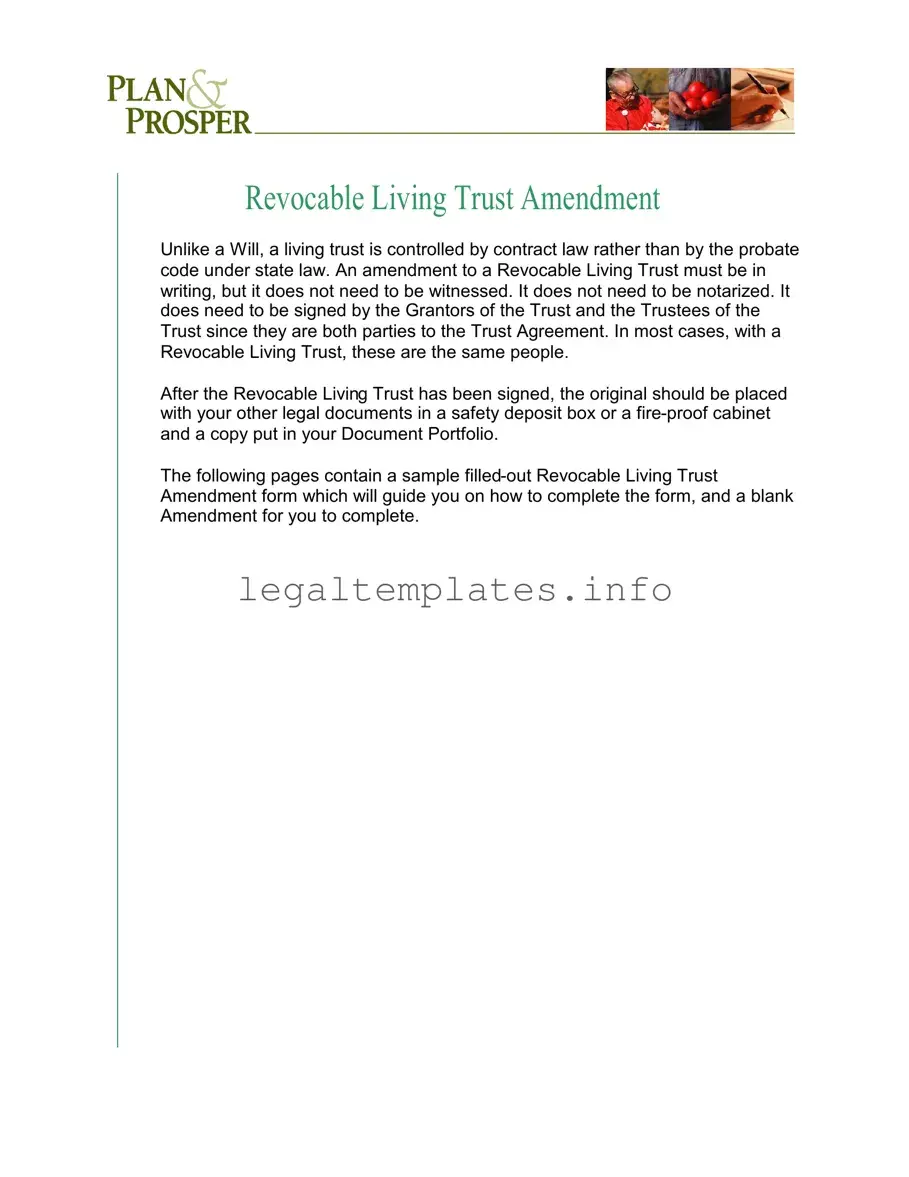A Will, similar to a Revocable Living Trust Amendment, is a legal document that outlines how a person's assets should be distributed after their death. While both documents serve to dictate the management of an estate, a will goes through the probate process, whereas an amendment to a revocable living trust, which operates under contract law, often bypasses this process. This key distinction highlights the amendment's ability to modify an existing trust agreement without the formalities required in altering a will, such as witness signatures.
A Power of Attorney is another document that bears similarity to the Revocable Living Trust Amendment in that it grants someone authority to act on behalf of another in legal or financial matters. However, while a Power of Attorney is often used to give immediate control over one’s affairs, an amendment to a living trust specifically addresses changes to the management and distribution of trust assets. Both documents, importantly, require clear indications of the grantor's intentions but serve different purposes and times of effect.
A Healthcare Directive, or Living Will, though primarily focused on medical decisions rather than asset distribution, shares a common thread with the Revocable Living Trust Amendment in its preemptive approach to planning. Just as a living will outlines specific wishes regarding medical treatment when the individual is unable to communicate, the trust amendment similarly allows for proactively changing the terms of asset management and distribution based on evolving wishes or circumstances without the need for court involvement.
The Codicil to a Will is a document closely aligned with the purpose and structure of a Revocable Living Trust Amendment, as both serve to make alterations to an existing legal document. A codicil allows for modifications to a will without necessitating a complete rewrite, much like how the trust amendment changes components of the living trust. Although their legal frameworks differ—with codicils adhering to probate law and amendments to contract law—they similarly aim to ensure an individual's current wishes are accurately reflected in their estate planning documents.
Beneficiary Designations on life insurance policies or retirement accounts are also related to Revocable Living Trust Amendments. While these designations are made within the context of specific financial products and legally bypass the estate upon death, directing assets to named beneficiaries, an amendment modifies a trust’s terms, potentially altering who benefits from the trust and how. Despite their different scopes and applications, both mechanisms play crucial roles in estate planning, enabling the allocation of assets to chosen individuals.
A Transfer on Death Deed provides another parallel to the Revocable Living Trust Amendment, as both are designed to simplify the process of transferring assets upon the grantor's death. This deed allows for real estate property to pass directly to a named beneficiary without probate, similar to how assets within a living trust bypass the probate process via amendment modifications. Both methods provide a streamlined approach to ensuring assets are distributed according to the grantor's wishes with minimal legal complication.
Lastly, the Appointment of Guardian document, while primarily concerning the guardianship of minors or incapacitated adults rather than asset management, echoes the foresight and preemptive planning inherent in a Revocable Living Trust Amendment. By appointing a guardian, an individual proactively determines who should take responsibility for their care or their dependents’ welfare, akin to how an amendment proactively changes trust details to better reflect current desires and situations regarding asset distribution.





